Despite their slow, backward territorial approach, the world's military machines are under constant pressure to stay ahead of the times. If they don't, they lose wars. At least in theory. In practice, that's not always true. All ten weapons from the distant past are used on modern battlefields — sometimes with triumph.
10. The Club (1918)
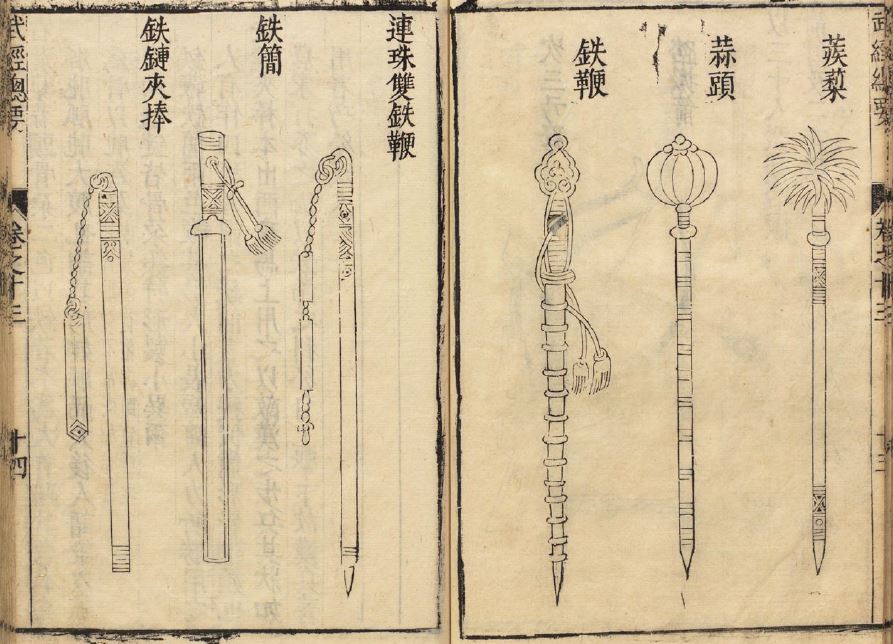
First World War, the so-called "Great War," introduced all manner of weapons for long-range combat, from tanks and submarines to machine guns and nerve gas. In practice, however, in the realities of trench warfare, soldiers on both sides improvised bladed weapons. They turned stakes into push knives, entrenching tools into battle axes, and anything that could be passed into clubs.
The clubs were particularly brutal. Some were simply large pieces of wood, while others were far more elaborate – such as the German morning star, which had ersatz wrist straps and deadly spikes on its head. The French version, which also doubled as a walking stick, was made from natural gnarled wood, a leather handle, lead weights and iron spikes. Meanwhile, British clubs were often simpler. The knockcarry, for example, was a standard entrenching tool handle with a knurled metal head.
The effectiveness of this weapon for trench raiding soon led to standardization and mass production for official army issue.
9. Lance (1939)

A symbolic return to the era of chivalry, duels between knights on horseback, the spear was used until World War II — at least, that’s what the legend says. On September 1, 1939, as the story goes, veteran Polish Colonel Kazimierz Mastalerz and his cavalry saw a mass of German forces — much larger than their own, and supported by tanks — and realized they’d need the element of surprise. Mastalerz decided to charge. And despite being mowed down by machine guns, the mounted lancers managed to scatter the enemy.
In truth, this dramatic story was spread by Italian and German propagandists. Mastalerz and his cavalry did indeed attack the enemy, but not as naively as they remembered, and probably not with spears.
However, although the Polish cavalry after 1937 generally used anti-tank rifles, lances were still part of their arsenal. The appeal of the lance, used at the commander's discretion, was its psychological effect on the enemy.
8. Brass Knuckles (1945)
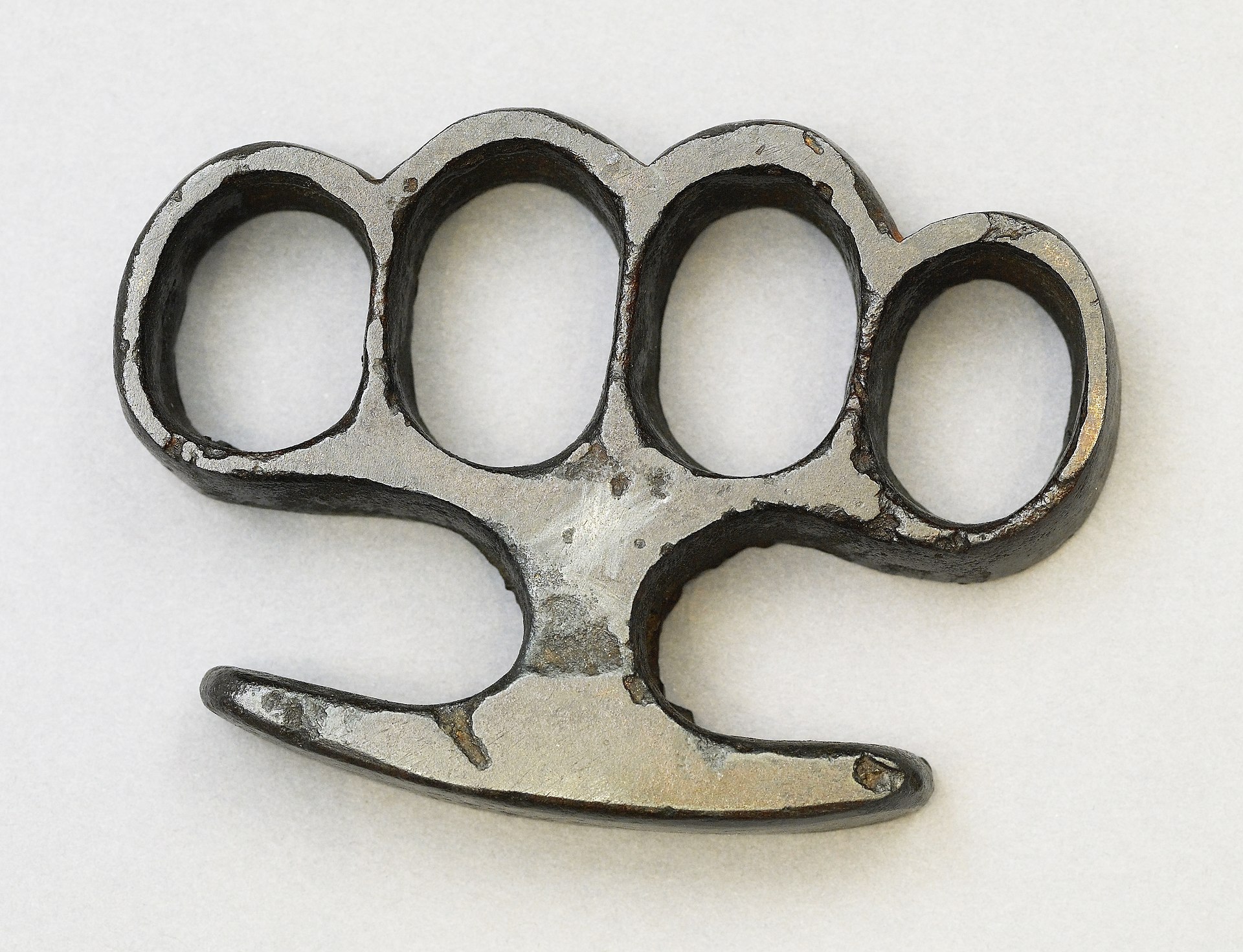
Brass knuckles were probably first used in the 12th century in India, where a spiked vajra-mushti, or "thunder fist," was a hallmark of the fight. Before that, fist augmentation with metal attachments usually took the form of a glove — like the cestus that wore Roman gladiators.
Later, brass knuckles were used during the American Civil War. In fact, Abraham Lincoln (as well as his bodyguards) were known to carry this weapon.
More recently, they were used in World War I and World War II. There were a number of reasons for this. In addition to the requirements for close-quarters trench raiding, they were also cheap to buy or easy to make by melting down lead bullets and casting them into molds. Another advantage was the free use of the fingers when wearing them, allowing soldiers to reload their weapons.
7. Blow Gun (1945)
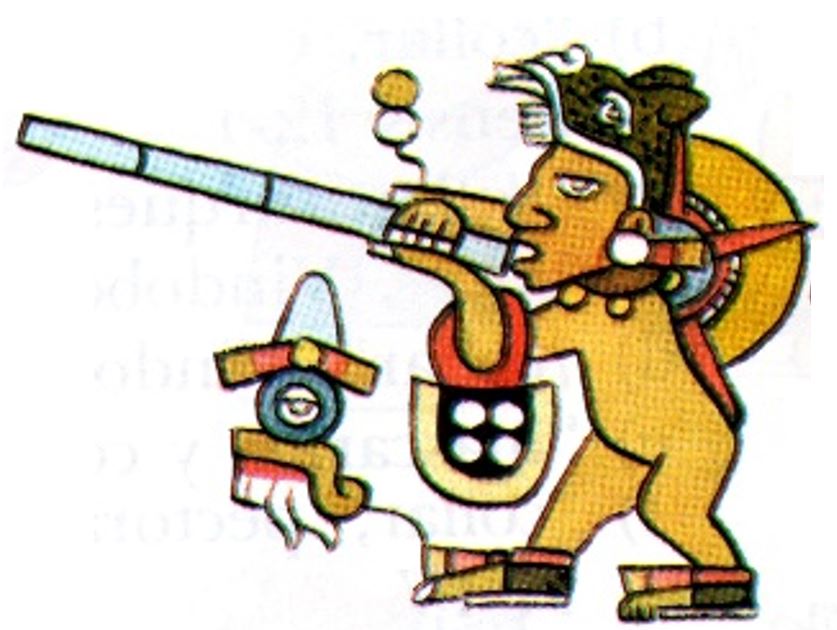
Air guns are silent and deadly. The moment the victim hears the dart, it strikes him dead (or worse, depending on the poison). In 1964, they were used by guerrillas in the Congo, killing the Congolese army chief of staff, as well as an American missionary and others.
These aren’t the weapons you’d associate with modern warfare. But they seem to have helped the Allies win World War II. During the Borneo campaign, local Dayak headhunters were encouraged to use their blowguns against the Japanese. They were even joined by American troops. After his B-24 Liberator crashed, one American soldier who parachuted onto the island was rescued by Dayaks and trained in the art of blowgun use. Two decades later, the tables were turned, and invading American troops found themselves under the guns of the Viet Cong in Vietnam.
As recently as 2022, American soldiers stationed in Hawaii used darts against stray cats on Oahu, causing outrage among locals.
6. Bow and Arrow (1945)
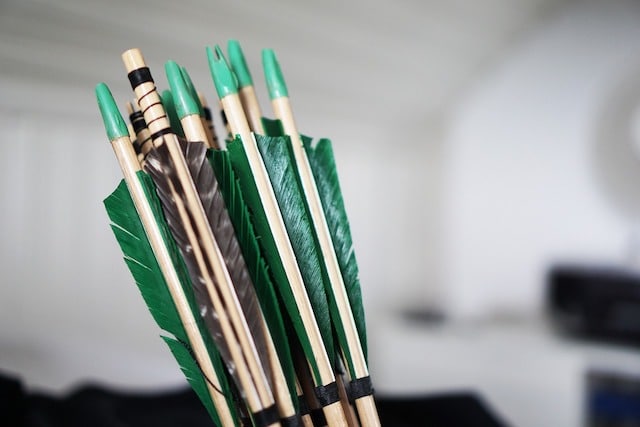
According to the Second World War diary of the British 4th Infantry Brigade, “the sight of Captain Churchill walking along the beach with bows and arrows” was one of the most heartening moments of the landing at Dunkirk. “Mad” Jack Churchill was known for his use of old weapons, once declaring that “any officer who goes into battle without a sword is not properly dressed.” But he also believed in the longbow. After the Battle of Epinette in France, when his company was pinned down by the Nazis, he killed the first enemy soldier with his longbow before resorting to machine guns.
Even today, some people wonder why archery has fallen out of favor. The U.S. Army itself has shown its tactical superiority — at least in some situations. In 2015, for example, Special Forces shot at a box filled with dirt using a variety of weapons (the M1911A1 .45 automatic, the .30 M1 carbine, the .30 M1 rifle, and modern bow), and only the bow and arrow shot out the other side. Another advantage, of course, is that they are easy to make in the field.
5. Crossbow (1999)
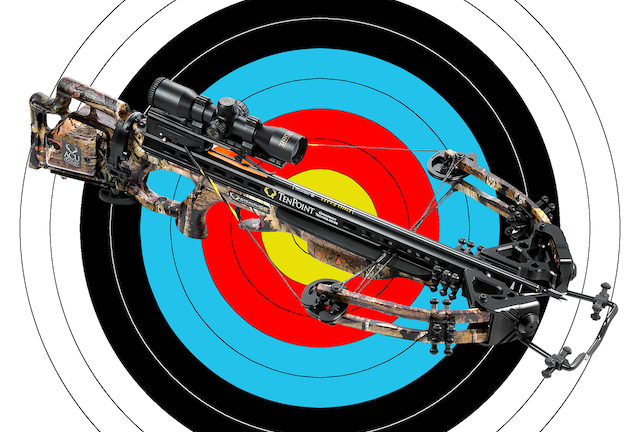
Crossbows, invented two and a half thousand years ago, were used in the Vietnam War last century. But there they were the traditional weapon of the native mountain people, or "Montagnards".
Less traditional was its use by the Serbs against the Kosovo Liberation Army (KLA) in the 1990s. Surprisingly, they didn't just use what was at hand. Crossbows were specifically selected and imported from England as the weapon of choice for combating snipers. Not only are they silent, one journalist said at the time, but they also “have a psychological effect.” They also recalled the Serbian war criminal Arkan, who used crossbows and “other exotic weapons” to strike fear into the hearts of his enemies in the early 1990s.
But there was another, more practical reason. Because the British classified them as sporting equipment, crossbows were not subject to the same export restrictions as other lethal weapons. So, at least until the British government found out, they could be imported freely into the war zone. Countries closer to the conflict, such as Slovenia and Croatia, were not so laissez-faire – as the KLA found out when they tried to buy some weapons from them.
4. Bayonet (2004)

Bayonets have not been used regularly since the Vietnam War. Based on spears, they are designed to pierce the enemy, which, given that they are mounted on rifles, was much more important before automatic reloading, such as during the American Revolutionary War and Civil War. They were only used in Vietnam because the jungle made close combat inevitable.
But in 2004, a British corporal led a bayonet charge against the Taliban in Helmand. Under heavy fire from nearby soldiers, his patrol ducked into a ditch, then realised they were pinned down. So, while two men laid down covering fire, the corporal and three others jumped out and charged. The Taliban soldiers were apparently so disoriented that they retreated, and by the time they reappeared, reinforcements had arrived.
Spears were used even before bayonets, but not by advanced modern armies. In December 2019, before they acquired firearms, the Masalites of Darfur still defended themselves with spears, as well as knives and daggers.
3. Trebuchet (2014)

Another weapon from China, 4th century BC, trebuchet fell into disuse during the Middle Ages. Their last historical use was at the siege of Tenochtitlan in 1521. They have since been replaced by artillery.
But in 2014, Syrian rebels built trebuchets to fight Assad. Their advantage over modern weapons (no sound, light, heat, etc.) was purely accidental; the rebels used whatever was at hand. For example, they built their own grenade launchers out of decorative balls and shotgun shells. They also rigged video game controllers to fire mortars and built their own “tanks”: cars surrounded by corrugated iron.
2. Sword (2020)
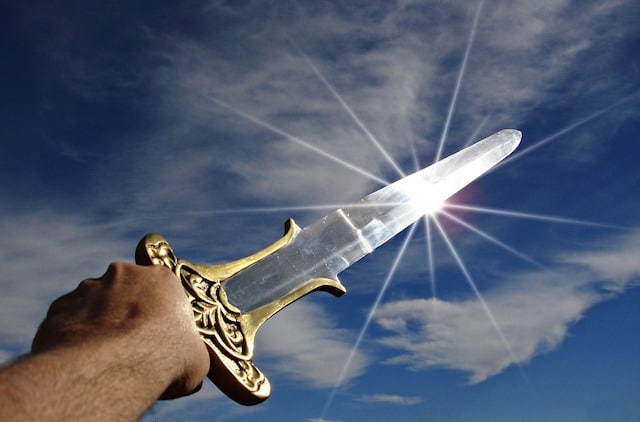
In Yemen, it is common to see men carrying swords, many of which were forged from street fragments during the civil war. Although Yemeni jambiya traditionally symbolic (like Sikh kirpan), the Houthis used it to continually oppress the population. In one particularly brutal incident, they stabbed a young man to death after beating him with wire, allegedly for exposing corruption.
But the last time swords were issued to troops was during the First World War. Despite all the new weapons debuting in that conflict, the cavalryman's sabre remained in action. For British and Commonwealth soldiers, it was the 1908 Pattern, which is actually credited with the first British defeat of the war; Captain Hornby of the 4th Dragoon Guards killed a German of the 4th Cuirassiers. Intended for horseback riding, the design (reluctantly approved by King Edward VII, who called it "abominable") was meant to be run through and killed by the enemy. In other words, it was for thrusting, not cutting.
Although the Japanese soldiers brought cutting swords (katanas) during World War II, they were not intended to be used as weapons. They were treasured family heirlooms given to soldiers for good luck. The hope was that both would return home safely. Eventually, however, America, still pumped up from killing half a million civilians, forced Japan to hand them all over, knowing that a samurai sword lost its value once surrendered.
1. “Maxim Machine Gun” (2022)
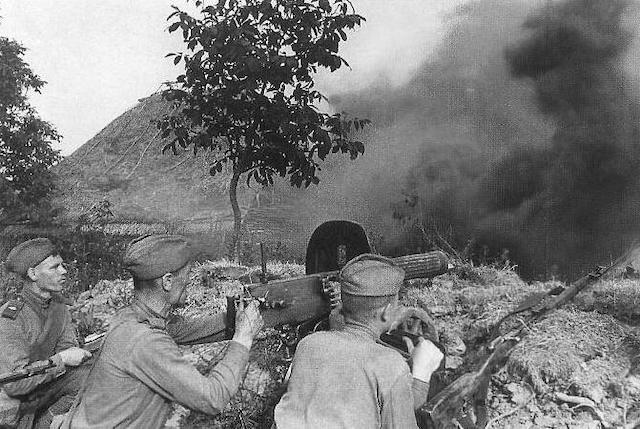
The Russian version of the first automatic machine gun was called the Maxim Machine Gun 1910, or M1910 for short. The original British-made Maxim, introduced two and a half decades earlier in 1884, had impressed Russia so much in the war against Japan (1904–1905) that they took it upon themselves to develop it further. A few years later, it was used by the Imperial Russian Army in World War I, giving that conflict its nickname: machine gun warfare. It was also used by the Red Army in the Russian Civil War, as well as World War II.
And just last year, Ukraine used it against Russia. Although Russian media ridiculed them, they actually had a good reason. Unlike modern machine guns, the bulky, stationary, rapid-fire relic of the early 20th century has a liquid cooling system, a brass water jacket around the barrel. Modern machine guns fire in bursts to avoid overheating, barrel deformation, and premature explosion of ammunition. Meanwhile, the M1910 can fire continuously for several minutes.
This was not the only antique they used. The Ukrainians also used an American-made M101 howitzer and a Russian-made D-44 artillery piece from the early 1940s.









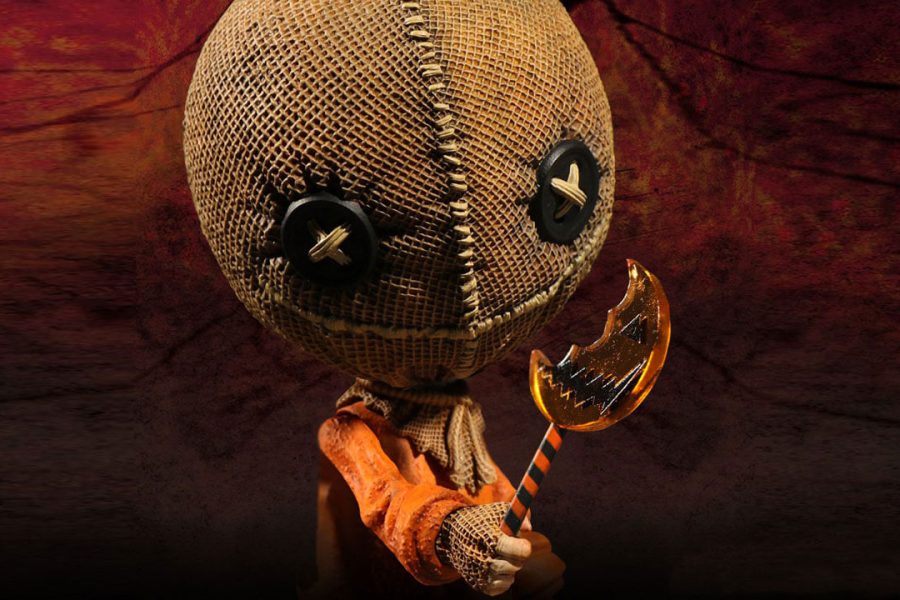



Оставить Комментарий